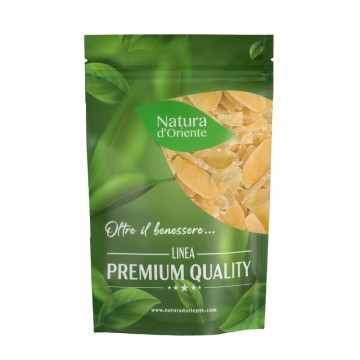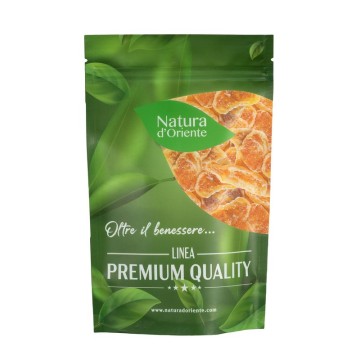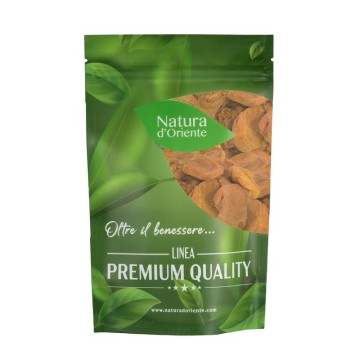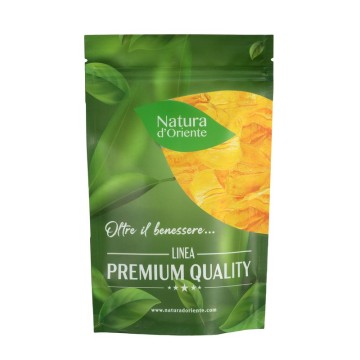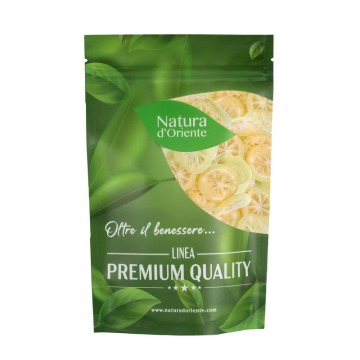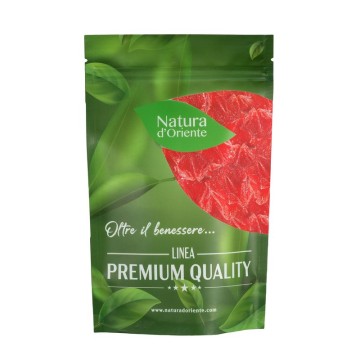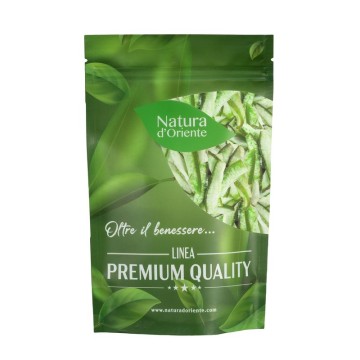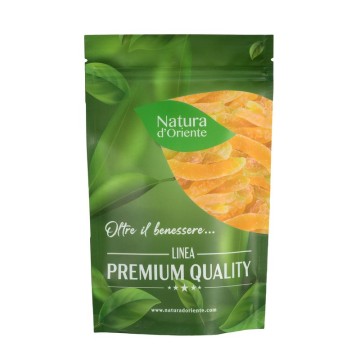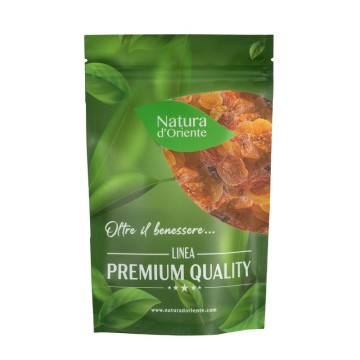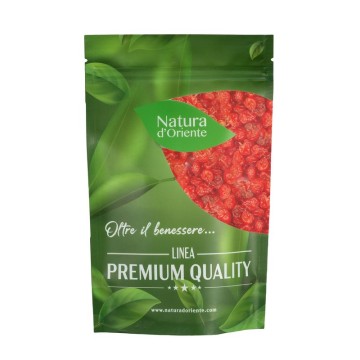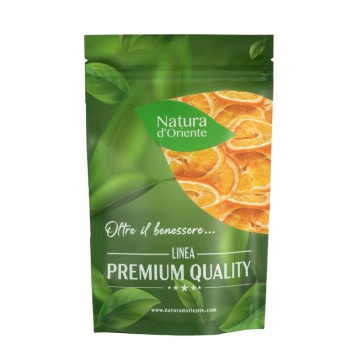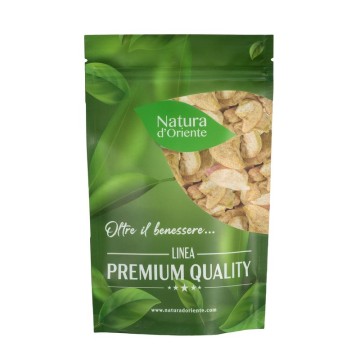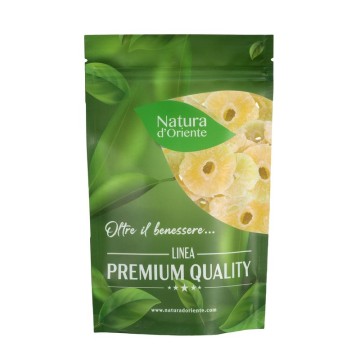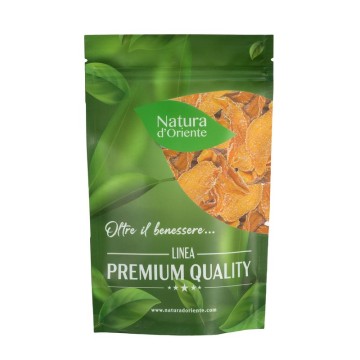Ginger with dehydrated crystallized sugar
The ginger plant, or rather its root, has been used for centuries, in the kitchen and for the well-being of the human body. The plant, in fact, is rich in beneficial properties, also available in the dehydrated ginger version.
Dehydrated ginger with sugar: properties and benefits
As a spice, ginger root is now used all over the world, and in particular in the dehydrated version of ginger it has become a valuable flavoring. The crystallized sugar that is placed on the slices of ginger, brings even more energy to those who want to balance the sugars present on the surface, with the other substances inside the ginger naturally.
In oriental medicine, this plant was known for its health properties, used at the time as a natural anti-inflammatory, to stimulate excellent digestive effects, and as an anti-nausea and anti-dizziness substance. Among some peoples, ginger was also known as an aphrodisiac.
Today we know that its use was possible because it contains active ingredients in its root, the rhizome: substances such as gingerols, shogaoli, resins and mucilages.
The anti-nausea characteristics of ginger derive from polyphenols, gingerols and shogaols, which are also the elements responsible for its pungent flavor. These substances are also valuable antioxidants, they help protect cells from damage due to aging.
The substance of gingerol creates an antioxidant enzyme in the body, and it seems that its effect is greater than that of vitamin E - already present in ginger in any case.
Among the known properties of ginger, there is the ability to soothe a sore throat, and in the past it was used to treat hoarseness when talking too much. Furthermore, against the winter colds of the oropharyngeal system, it was useful to counteract the cold air in the lungs.
The digestive benefits of ginger are due to the fact that it is a protective food for the gastric mucosa, excellent for counteracting the accumulation of toxins and bacterial fermentation during digestion. In addition, it promotes the elimination of intestinal gas. We know that it improves gastrointestinal motility and stomach muscle tone.
In the past it was used as a natural antiseptic, due to its purifying characteristics, which help the correct assimilation of food.
Always as a "purifier", ginger is used against halitosis, to immediately favor a fresh and fragrant breath.
Ginger has anti-emetic properties, that is, it can reduce the symptoms of motion sickness (such as dizziness, nausea and esophageal reflux), and has historically been used as a sedative against stomach pain.
On a calming level, it is historically known as a beneficial food to alleviate disorders related to the menstrual cycle such as pain in the pelvic area and headaches.
Compared to the dehydrated version of ginger, remember that when the water is removed during the drying procedure, the concentration of polyphenols increases.
Origins and History of cultivation
Ginger is a herbaceous plant native to tropical Asia, used for centuries in cooking and for its health properties. From its rhizome, the underground part or root, an aromatic spice with a pungent flavor is obtained.
Already in China millennia ago, reading the writings of Confucius (5th century BC), ginger was used in oriental medicine as a hot element, excellent for fighting the cold and rebalancing the body.
Ginger was also considered a precious food by Greeks and Romans, and the doctor Dioscorides Pedanio (1st century AD) recommended it to warm and calm the stomach. Among the Arab peoples it was also known as an energizing and aphrodisiac food.
Being able to preserve food, it was attributed magical properties (it looked like a miraculous food) and for this reason it was the object of trade.
Considered very precious in the Middle Ages, the ginger plant was known as "gengevo" (hence the English gingifer and then the current ginger) and as such in the sixteenth century it also reached the Americas during colonization.
Today ginger is grown throughout the tropical and subtropical belt of the planet, the underground part (the rhizome) is collected, cleaned if you want to use it as fresh ginger, or to obtain dehydrated ginger dried in the sun, transformed powdered and sold as a spice.
It can be dehydrated and cut into pieces, slices, cubes, ground or candied - even with the addition of sugar on the candied pieces. As for our ginger with crystallized sugar, dehydrated.
Plant and Fruit
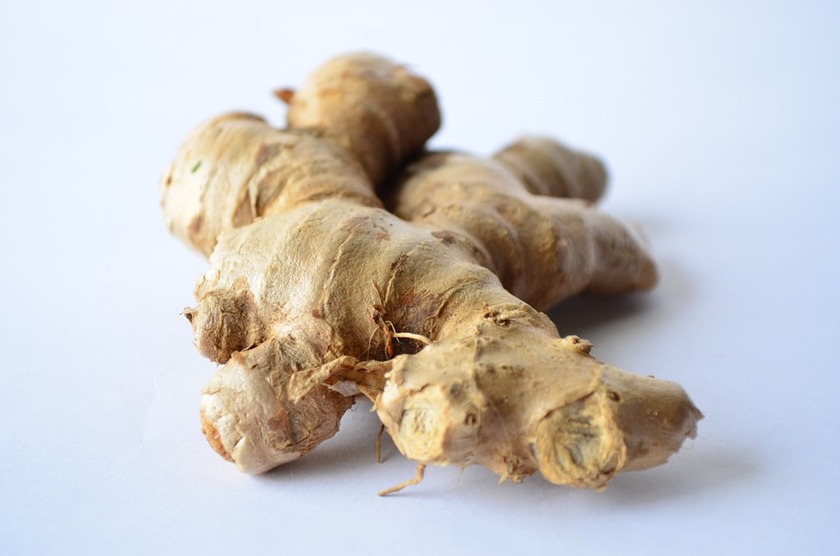 Ginger comes from the perennial herbaceous plant Zingiber officinale, and belongs to the Zingiberaceae family, native to the Far East in a tropical area.
Ginger comes from the perennial herbaceous plant Zingiber officinale, and belongs to the Zingiberaceae family, native to the Far East in a tropical area.
It is a plant that has a fleshy and branched rhizome (an underground shoot), from which hollow stems formed by leaves are born; as well as other stems with yellow-green inflorescences.
Ginger flowers, on the other hand, are small and white. The bushes expand with growth, reaching up to half a meter in width and height.
The fruit is woody and is not used in cooking as is the case with the underground rhizome.
The ginger plant can be grown indoors or in home gardens. In any case, it grows in warm climates, where temperatures do not drop below 5 ° C.
The rhizome is harvested from the moment the ginger plant has accumulated essential oil, ie between January and February, during the cold season.
Nutritional values of dehydrated ginger with crystallized sugar
Dried ginger has a substantial caloric intake, since it provides 370 Kcal for every 100 grams. In the version with crystal sugar, sliced ginger is composed of sugars (74 g), but 0% fat, and about 4% fiber.
The dehydrated version also makes available the important active ingredients contained in the essential oil: zingiberene, polyphenols, gingerols and shogaoli which make its taste spicy.
Sweetened ginger contains these highly studied phenolic substances, including 6-gingerol which when dried turns into 6-shogaol.
It has good doses of vitamin E, vitamin B6, potassium, magnesium, zinc, copper and manganese.
Dehydration enhances the properties of fresh ginger, sugar makes it less pungent and sweeter on the palate, beneficial in effects.
How to consume sweetened dehydrated ginger in the kitchen or as a snack
As a spice, ginger has a sparkling taste suitable for flavoring dishes, but in this version with sugar, it makes a completely different contrast between spicy and sweet.
If in oriental cuisine it was used to flavor sweet or savory dishes, in western cuisine it is used a lot as a snack, to flavor sophisticated dishes, drinks, cocktails; in addition to the versions of dehydrated ginger with sugar or candied, perfect as real natural "candies".
Sweetened ginger has a strong but contrasting flavor, it is very popular as an energy snack or a break-hungry snack.
It can become an ingredient for the preparation of cakes, biscuits, and other sweets, having already crystallized sugar. It can be used to create energy bars suitable for those who practice physical activity.
Ginger with sugar can be chopped into yogurt, smoothies, ice cream, cupcakes or muffins. Or in dried fruit mixes, and in some fruit salads where its taste blends well with the other ingredients.
Dehydrated ginger: side effects and contraindications
There are no particular warnings for taking ginger, but a possible intolerance to the food must be considered.
When taking it, it is important not to exceed the doses of ginger with sugar, since it contains such glucose levels as to be able to raise the glycemic peak for those suffering from diabetes. For this reason, it should be used with caution during pregnancy or breastfeeding.
Since its fluidifying properties have been studied, even if not definitively proven, ginger is not recommended for people who use anticoagulant drugs.

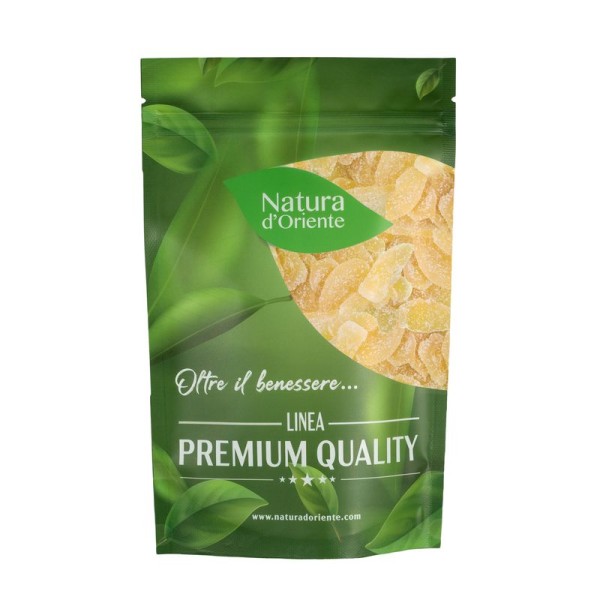









 No reward points for this product.
No reward points for this product.
 Ginger comes from the perennial herbaceous plant Zingiber officinale, and belongs to the Zingiberaceae family, native to the Far East in a tropical area.
Ginger comes from the perennial herbaceous plant Zingiber officinale, and belongs to the Zingiberaceae family, native to the Far East in a tropical area.